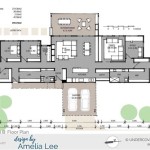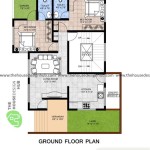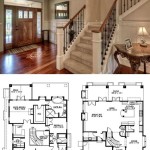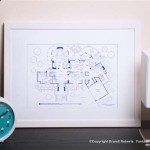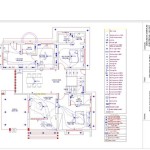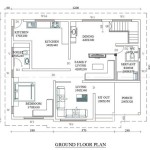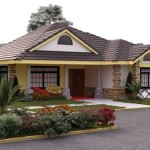Floor Plan of the White House 2017
The White House, a symbol of American presidency and history, is a complex structure far beyond the iconic façade seen in photographs. Understanding its layout requires exploring various levels, including the public Ground Floor, State Floor, and Residence floors. While specific details about security and internal workings are often withheld for safety reasons, publicly available information offers insights into the general floor plan as it existed around 2017.
The Ground Floor primarily serves logistical and operational purposes. This level houses the White House Mess, a small restaurant for staff, and various support offices. The Diplomatic Reception Room, located on this floor, serves as an entrance for foreign dignitaries and is decorated with American-made furniture and art. The Map Room and Library also reside on the Ground Floor, providing additional space for meetings and research.
Moving to the State Floor, visitors find the grand rooms most often seen in official events and press coverage. The East Room, the largest room in the White House, hosts receptions, press conferences, and even concerts. Its ornate chandeliers and historical significance make it a memorable venue. Adjacent is the Green Room, a smaller, more intimate space used for smaller receptions and gatherings. Its signature green color scheme has lent its name to similar rooms in other government buildings.
The Blue Room, a prominent oval-shaped room, functions as a formal reception area. It is traditionally decorated with blue upholstery and draperies, and its central location connects it to the Red Room and the Green Room. The Red Room, with its rich red décor, acts as another parlor for guests and small events, offering a stately atmosphere. The State Dining Room, capable of seating up to 140 guests, hosts official dinners and banquets. Its grandeur reflects the importance of state occasions.
The Entrance Hall and Cross Hall form the main arteries of the State Floor, providing access to various rooms including the East Room and the State Dining Room. The Grand Staircase, a prominent architectural feature, connects the State Floor to the Second Floor residence.
The Residence, located on the second and third floors, offers a more private setting for the First Family and their guests. The Second Floor includes the Yellow Oval Room, often used as a private sitting room or reception area by the president. The Treaty Room, originally a library, has served as a small meeting room for significant discussions and agreements.
The East Sitting Hall and the West Sitting Hall provide informal gathering spaces within the residence. The Lincoln Bedroom, a historic guest suite, has hosted numerous dignitaries and heads of state throughout the years. The Queen's Bedroom, another guest suite, offers similar accommodations for visiting dignitaries.
The Third Floor contains additional bedrooms, including the Lincoln Sitting Room, which provides a private space connected to the Lincoln Bedroom. This floor also features a solarium, offering a bright and airy space for relaxation. Storage rooms and other functional spaces occupy the remainder of the Third Floor.
While the overall structure and room designations remain largely consistent, it is important to acknowledge that certain interior details may have been modified or updated since 2017. Successive administrations often undertake renovations and redecorations to reflect their style and preferences.
The White House grounds, though not part of the floor plan itself, play a significant role in the overall complex. The South Lawn provides space for official ceremonies, including the arrival of foreign dignitaries. The Rose Garden, adjacent to the West Wing, is a frequent location for presidential addresses and press conferences. The North Lawn offers a more secluded area, often used for private events.
Understanding the layout of the White House offers a glimpse into the history, functionality, and symbolism of this iconic building. From the grandeur of the State Floor to the more private areas of the Residence, each space serves a distinct purpose in the daily operations of the presidency. While visual representations like floor plans provide a useful overview, the true experience of the White House lies in its historical context and the important events that have unfolded within its walls.
Accessing detailed, up-to-date floor plans can be challenging due to security concerns. However, historical resources and publicly available information offer valuable insights into the general layout and purpose of the various rooms and levels of the White House.
The West Wing, an extension connected to the main White House building, houses the offices of the president and senior staff. The Oval Office, the president's formal office, is situated in the West Wing, along with the Cabinet Room and the Situation Room, where critical meetings and discussions take place. The West Wing serves as the nerve center of the executive branch, playing a vital role in the development and implementation of presidential policy.

What You Ll Never See On The White House Tour In 2024 Floor Plans

Discover The Floor Plan For Dream Home 2024

Rocky Top Manor Luxury Home Plan 026d 2024 House Plans And More

Contemporary Floor Plan 4 Bedrms 2 Baths 2630 Sq Ft 126 2024

Discover The Floor Plan For Dream Home 2024

Hpg 2024 1 The Gabriel House Plans

1st Floor Plan 064h 0093 In 2024 Mansion Luxury Multigenerational House Plans

The New American Home 2024 Design And Features Pro Builder

Lovely Southern Style House Plan 2024 Tanyard Creek

Farmhouse Style House Plan 3 Beds 2 Baths 2024 Sq Ft 1064 117 Houseplans Com

